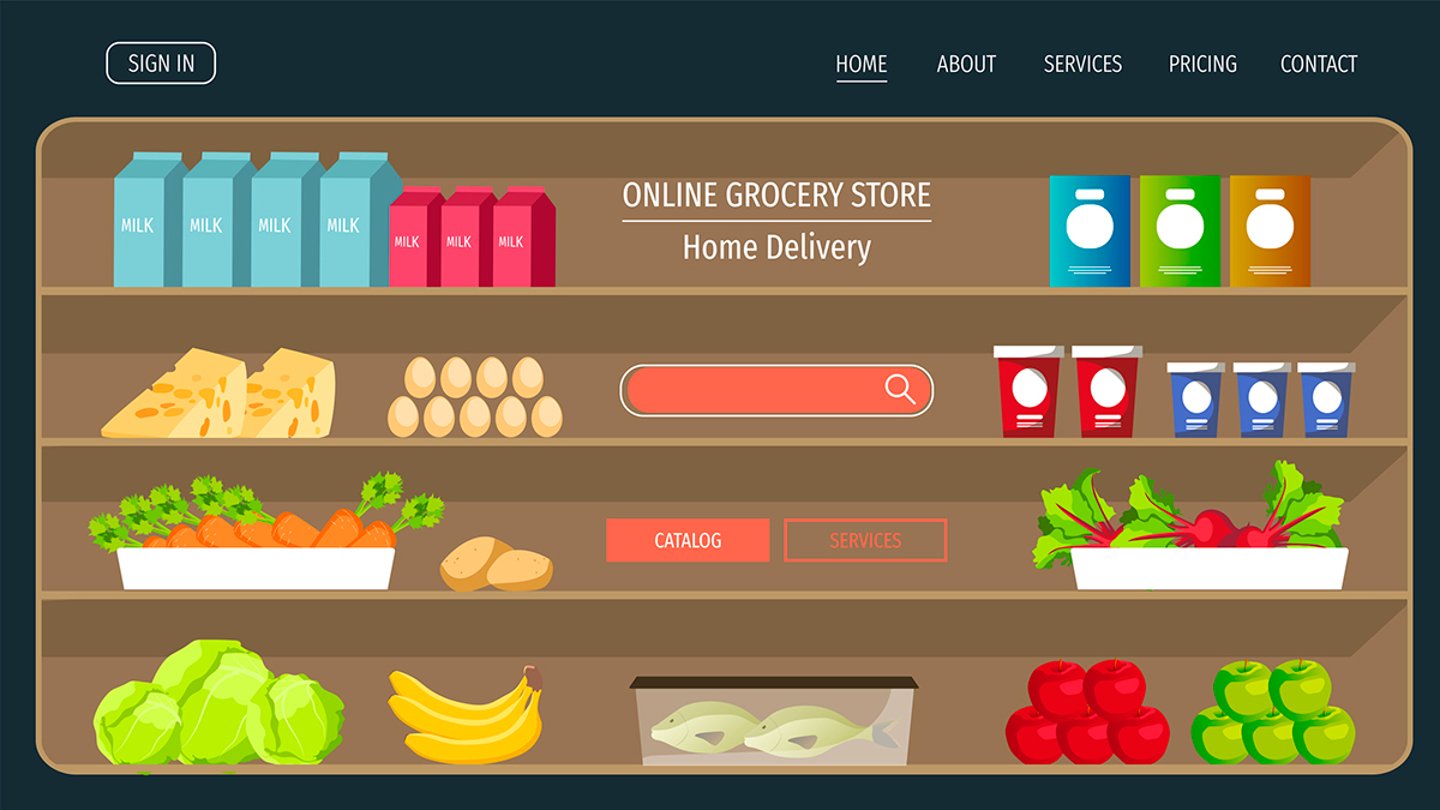5 Missed E-Commerce Opportunities for Consumer Goods Brands
The e-commerce grocery industry is expanding at a rapid pace. This category was already the fastest growing sector of online retail before the COVID-19 pandemic hit, experiencing a 35% compounded annual growth rate since 2018. And it has dramatically increased in the last few months due to consumers’ desire to stay out of brick-and-mortar stores. In June, almost 46 million consumers actively used online grocery, representing $7.2 billion in online grocery sales, both new record highs.
Online grocery now represents a $26 billion industry that’s expected to grow into a $117 billion industry over the next three years. That level of growth presents a sizable sales opportunity for consumer goods companies willing to adapt the way they connect with customers online to fit the changing needs and preferences of today’s consumers.
Point of sale has shifted to point of search
Increasingly, grocery shoppers aren’t standing in front of a physical shelf full of options. They’re typing keywords into a search feature, hoping to locate products that meet their wants and needs. If the product search doesn’t return the desired results, the digital shelves are empty. When product listings that would have satisfied the consumer’s needs or wants aren’t assigned the correct product attributes, they don’t show up in the product search results.
The end result is a loss for both the consumer and the CG brand. The consumer leaves the search frustrated that the online retailer doesn’t carry products that meet their needs, and the brand loses the opportunity to gain a new customer.
Missed opportunities negatively impact CGs
The e-commerce grocery industry has struggled to keep pace with these changes. Today’s online grocery search is broken. Search results routinely fail to meet the criteria expressed within those searches. Rather than fully stocked digital shelves appearing in response to online grocery searches, consumers are presented with little to no results or results that contain the very ingredient the consumer wished to avoid. This leads to an erosion of consumer confidence in online retailers and missed sales opportunities for CGs.
Shoppers search online for products that meet their needs and desires based on product attributes — specific characteristics or categories that products fall into, such as “vegan,” “non-GMO” and “peanut-free.” For CGs, missing attribute data in their product listings creates consumer frustration and lost sales opportunities.
Here are just a few of the missed opportunities that can significantly impact a CG brand’s revenue.
1. Consumer search terms are misaligned with stated product attributes: If the product attributes you choose to include in your online product listings don’t match what consumers are actually searching for, you miss opportunities to get in front of customers with needs or wants that your product would fulfill. For example, if your listing is optimized only for the “low-carb” attribute but your customers are searching “keto,” they won’t find your product.
2. Lack of applicable attribute data decreases search result visibility and results in lower click-through rates: If you’re selling products that satisfy the standards for a certain type of dietary plan or nutritional preference and they’re not included in the product attribute data, consumers searching for these options will be unable to locate them for purchase. For example, vegan is the second most searched-for attribute in the snack food category, yet 76% of products that could make a claim to be vegan fail to do so. That omission alone represents an enormous missed sales opportunity and is only one example of many.
3. Failure to place the most searched for attributes in your product titles: In online grocery search results, product titles matter. Our research indicates that products that include a searched-for attribute in their title appear 41 places higher in the search results and receive 2.5 times more clicks than those that didn’t include this information. If you’re not placing the most searched-for attribute that your product qualifies for in the title, you’re missing an opportunity to get in front of consumers actively interested in purchasing products just like yours.
4. Neglecting to adjust product attributes to respond to evolving consumer trends: Consumer taste preferences, healthy eating trends and dietary fads tend to come and go quickly. If your product attribute information isn’t regularly retooled to meet existing customer demand, products in your line that may have met the criteria for a specific consumer preference won’t appear in online search results and won’t be purchased.
5. Not customizing product attributes based on retailer-specific search terms: Customer search terms don’t transfer evenly across online retailers. For example, customers looking for cold coffee on Amazon most frequently use the term “cold brew,” while those searching for those same products at Walmart most often use the term “iced coffee.” Small differences in product attributes across online retailers can make a significant impact on the amount of units sold.
As point of search rapidly eclipses the point of sale as the way consumers search for and purchase groceries, access to attribute driven data is more important than ever. Product attributes are the link that connects interested customers with the products they’re seeking to purchase. CGs willing to invest in and implement this data-driven approach gain access to a greatly expanded digital customer base.
Tim Whiting is VP of marketing at Label Insight.





